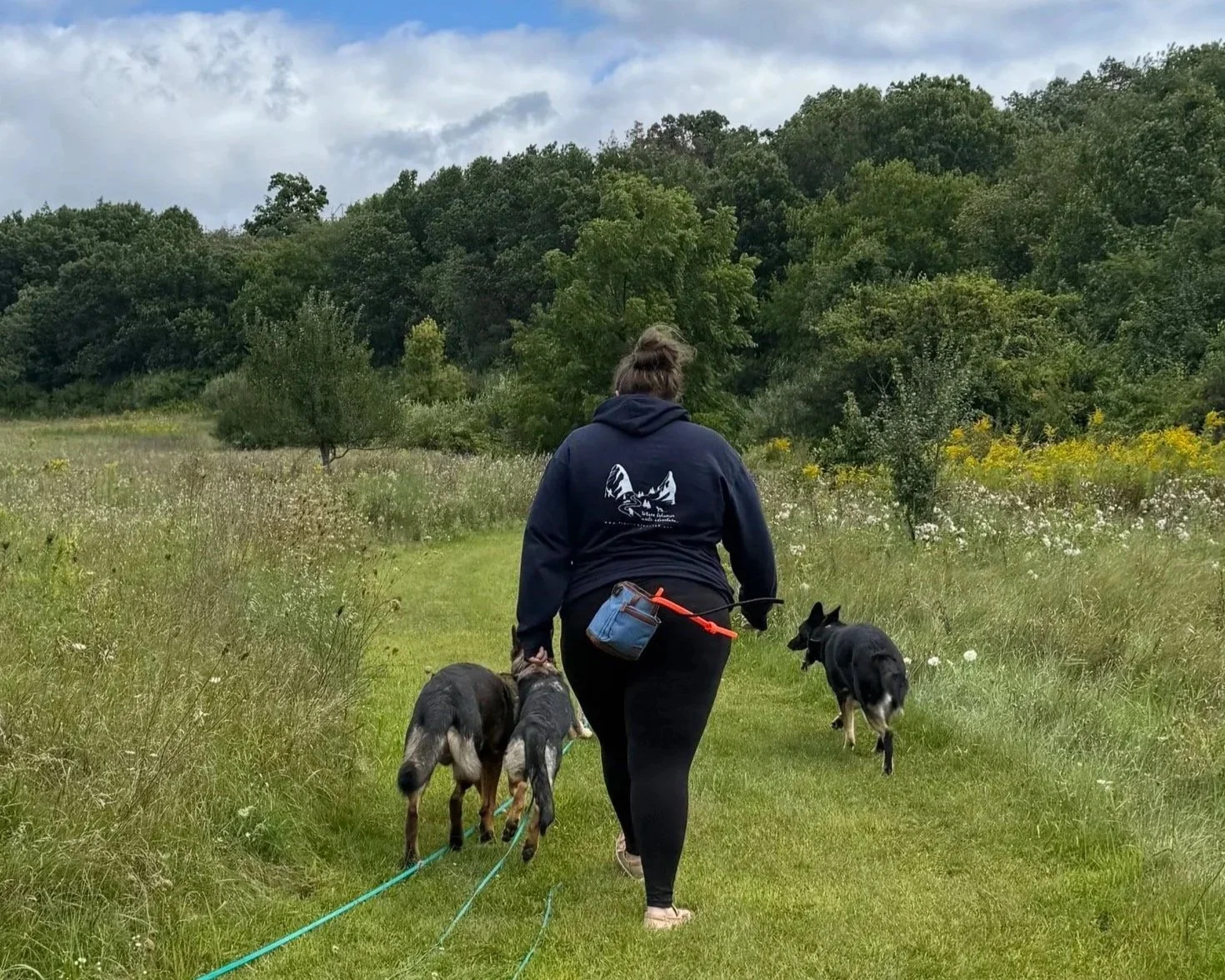Why Your Dog Doesn’t Come When Called And What to Do About It
There’s nothing more frustrating than calling your dog and watching them bolt in the opposite direction, nose to the ground or eyes locked on a squirrel. But here’s the truth:
Most dogs don’t have a recall problem. They have an everything else is more interesting than you problem.
That doesn’t mean they’re bad or stubborn. It means there’s more to recall than just shouting a cue and waving a treat. A reliable recall is about emotion, relationship, trust, and context. And most of all, it has to be conditioned, not commanded.
Start With the Relationship
Recall begins with trust. If your dog doesn’t feel safe or comfortable coming to you, or if their past experiences tell them that recall means the fun ends, they’ll hesitate.
We need to ask ourselves: Does my dog want to come back to me?
Have they been punished or leashed up every time they did?
Do they feel safe and understood when they return?
These questions matter more than the word you use for the cue.
Don’t Just Train It, Condition It
Most people train recall as an operant behavior.
Dog comes. Dog gets a treat.
But in the heat of the moment, when adrenaline is high or instinct kicks in, that system fails. Because the dog’s brain is no longer thinking. It’s reacting.
That’s why I teach recall as a classically conditioned behavior. Think of Pavlov’s dogs. They heard a bell and salivated. No conscious decision. Just an automatic response.
That’s what we want recall to be. The cue should instantly trigger a positive emotional reaction: joy, excitement, relief. That takes pairing the cue with something amazing every single time. It’s not just about reinforcement. It’s about emotional associations.
What Gets in the Way of Recall?
So many things can interfere with your dog’s ability to come when called:
Arousal: Even happy excitement can override the thinking brain
Stress: Cortisol and adrenaline flood the body, making learning nearly impossible
Punishment History: If coming to you has ever led to correction, they remember
Lack of Motivation: If the environment is more rewarding than you, why come back?
Inconsistent Practice: Recall has to be rehearsed across environments and distractions
We also have to consider the dog’s individual needs, prey drive, and breed tendencies. Some dogs were literally built to chase and sniff and ignore distractions, and recall means teaching them to pause that instinct.
It’s a Process, Not a Quick Fix
A reliable recall doesn’t happen in a weekend.
It takes layering, consistency, and thoughtful progression:
Start with a fresh cue (not one you’ve poisoned by overusing)
Pair it with parties - high-value food, toys, play, movement
Practice in easy environments first
Add small distractions gradually
Use long lines to keep them safe as you generalize
Vary your rewards: sometimes food, sometimes fun, sometimes a chase or scatter feed
This work doesn’t just build recall. It builds confidence, trust, and a stronger bond between you and your dog.
Want to Learn More?
This post only scratches the surface. In my free webinar, I go deep into the science and strategy behind building a real-life recall that works for dogs of all ages, breeds, and backgrounds.
You'll get real examples, a step-by-step plan, reinforcement strategies, and advice for when recall goes wrong.
Let’s build a recall that actually works for your dog, in your life.

